It smells of work here: on the Clyde River in Glasgow, the Finnieston Crane bears witness to a past of muscle, sweat and iron. Today it is surrounded by modern architecture along the riverbank that is well worth seeing.
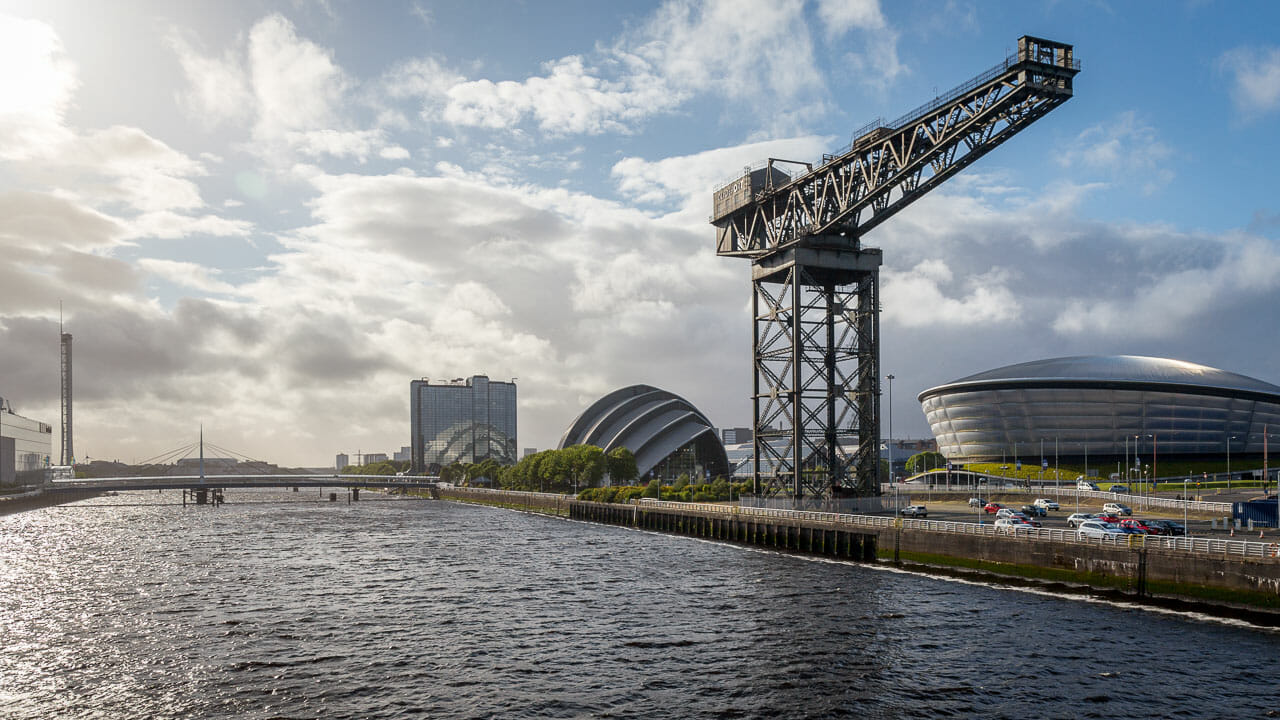
Admittedly, here in the west of Glasgow is not the romantic Scotland of Outlander, Highlander or Harry Potter. It is more reminiscent of the Scotland that had a lot to do with boom and crisis, with dirt, sparks and steel. And it is here that modern Scotland, with its preoccupation with contemporary architecture, reveals itself today. Both worlds meet at the River Clyde in the west of Glasgow and merge into a unique, fascinating design landscape on the banks of the great river.
Until the 1950s, the so-called Clyde Waterfront was a place that magically attracted heavy industry. Locomotives were well-known and sought-after – around 30,000 are said to have been built in Glasgow and then shipped to all corners of the then still great British Empire. Part of the British navy was also born on the River Clyde: shipyards such as Yarrows launched destroyers, gunboats and submarines here, as well as yachts and paddle steamers.
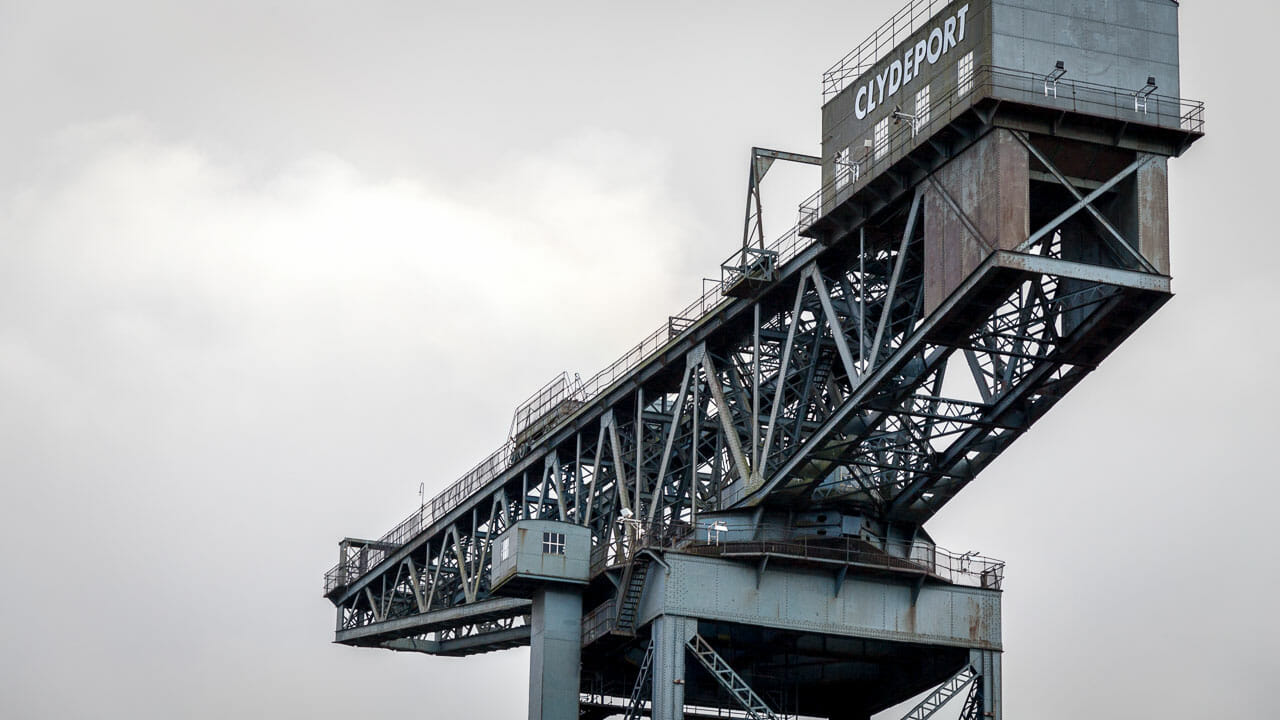
When loading locomotives or other heavy goods such as tanks, the Finnieston Crane and its colleagues came into play. Only four of these steel jib cranes still stand along the Clyde today, and the Finnieston Crane is the largest of them: 53 metres high with a jib 46 metres long and the entire structure weighing 175 tonnes. This monster was able to lift locomotives, swing them over the transport ship and carefully lower them.
The Finnieston Crane was the last of its kind to be put into operation on the River Clyde. It did its work from 1932 to 1969. But then heavy industry moved away and the quayside was decommissioned, as was the crane. But unlike some of its colleagues, it was allowed to remain standing. As a symbol of its time.
It stands there now, unchanged, while its surroundings have changed. New buildings in a modern style have been erected on the former Finnieston Quay.
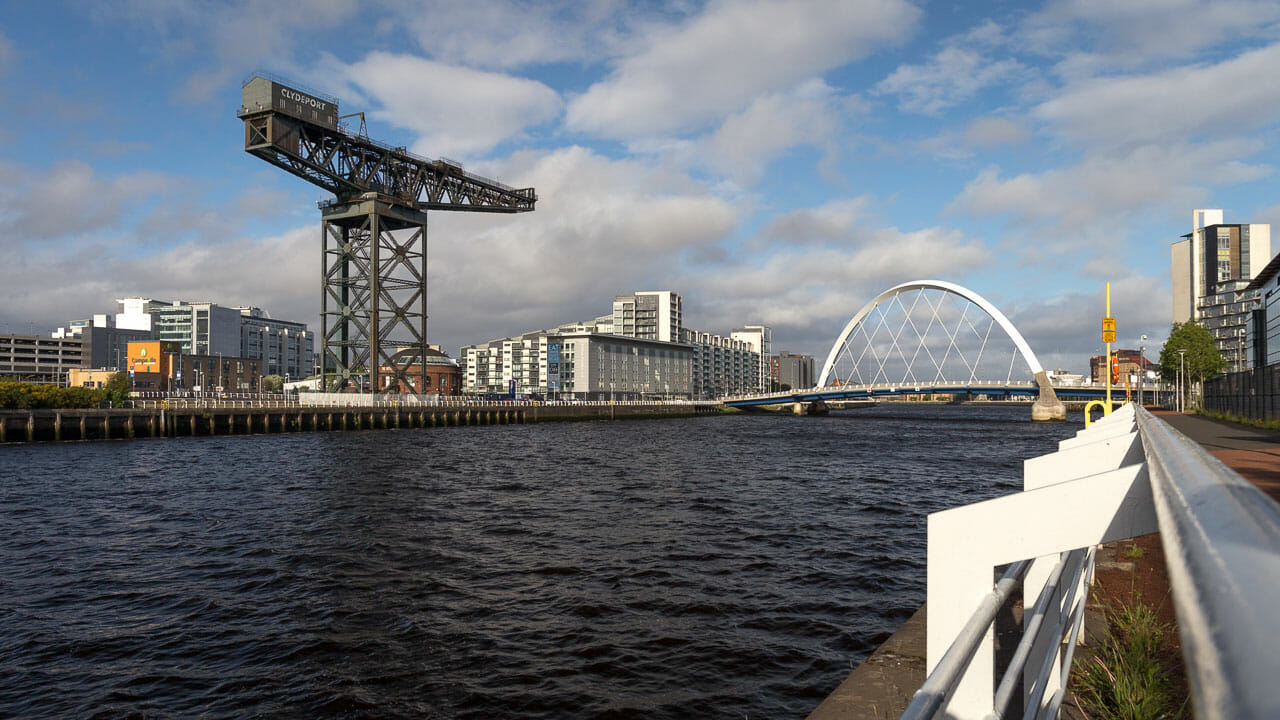
And yet it fits in wonderfully here and harmonises with its neighbours.
Knowledge: Correct name of the Finnieston Crane
Surprise: the Finnieston Crane isn’t actually called that. It used to be known as the “Stobcross Crane” or more correctly as the “Clyde Navigation Trustees crane #7”. Only over time did it take on the name of the area in which it still stands today.
There are only eleven of these jib cranes left in the world.
Visitors cannot climb the crane. If you want to, you can drive twenty minutes further out of town by car to the Titan Crane, which visitors can climb on weekends.
Tip: Walk along the Clyde
To get a really nice impression of the surroundings and to see the crane from different perspectives, a walk on both sides of the river is a good idea. Starting from the crane, you can walk towards the Clyde Arc, the car bridge towards the city centre. Cross the river here and walk along Pacific Quay on the other side.
You come to the first pedestrian bridge, Bell’s Bridge. You can already cross here.
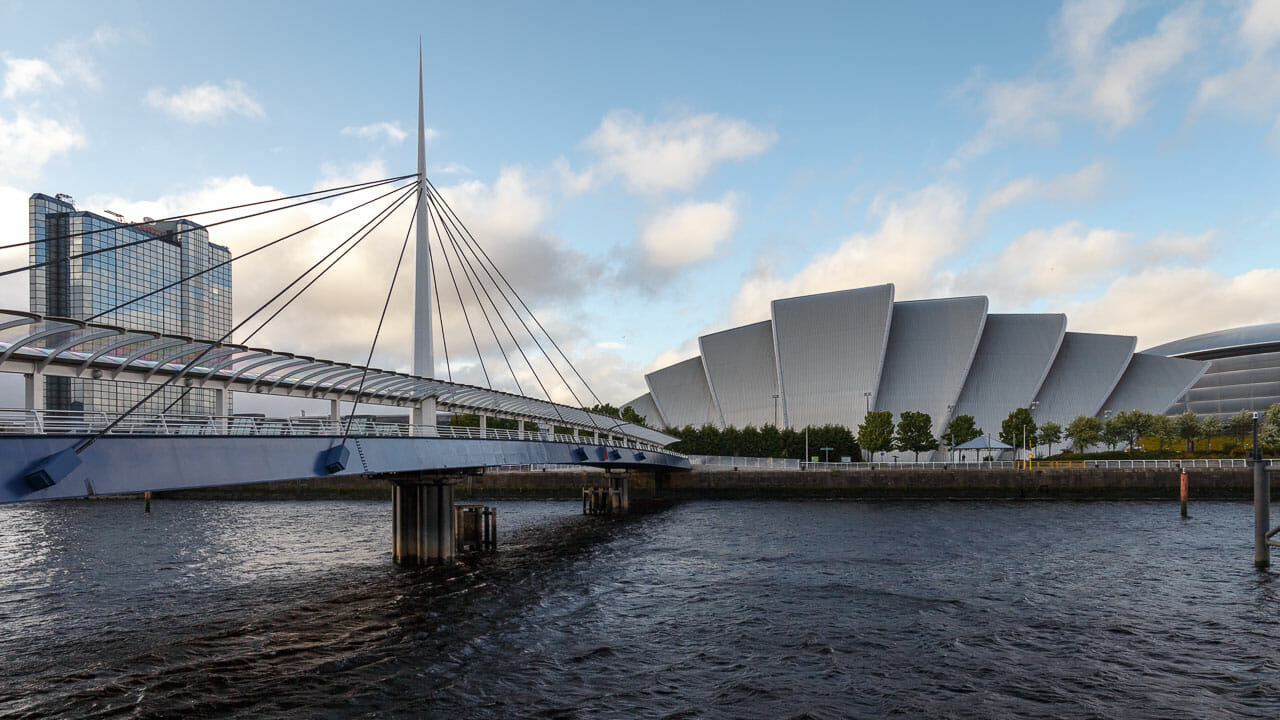
Or you can walk a little further along the mirrored BBC Scotland building …
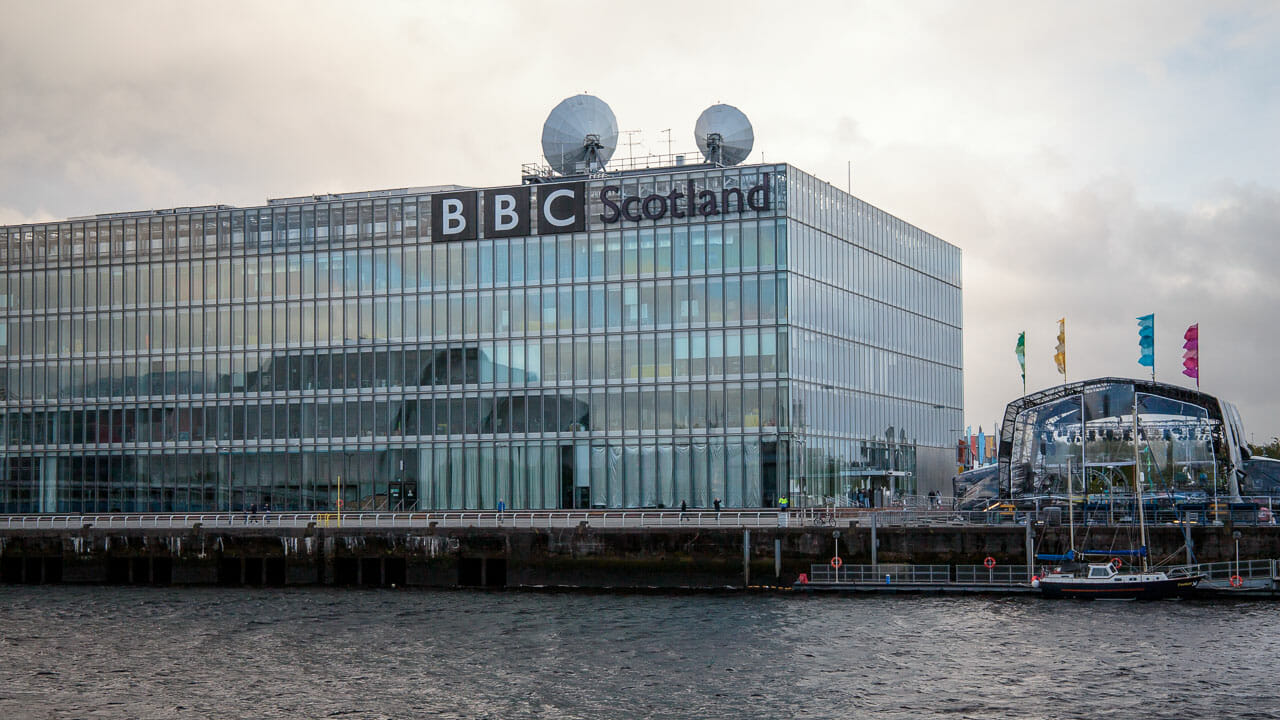
Before the Glasgow Science Centre is the Millennium Bridge, which leads over to the Crown Plaza Hotel, from where you can make your way back to the crane. This walk can easily be completed in half an hour.
How to get there:
Public: The x19 bus in the direction of “Govan, Queen Elisabeth Hospital” runs from the city centre (for example “Central Station” or “St Vincent Street”) to Finnieston Street, from where you can already see the crane. The journey takes around 10 minutes. Alternatively, you can take the Citysightseeing bus. This takes longer, but it stops at the Hilton Garden Inn Hotel or the SECC. Both are right next to the crane.
Car: Enter “Stobcross Rd, Glasgow G3 8HQ” in the satnav. This will take you to the SECC car park. There is usually enough space here, unless a major event is taking place.